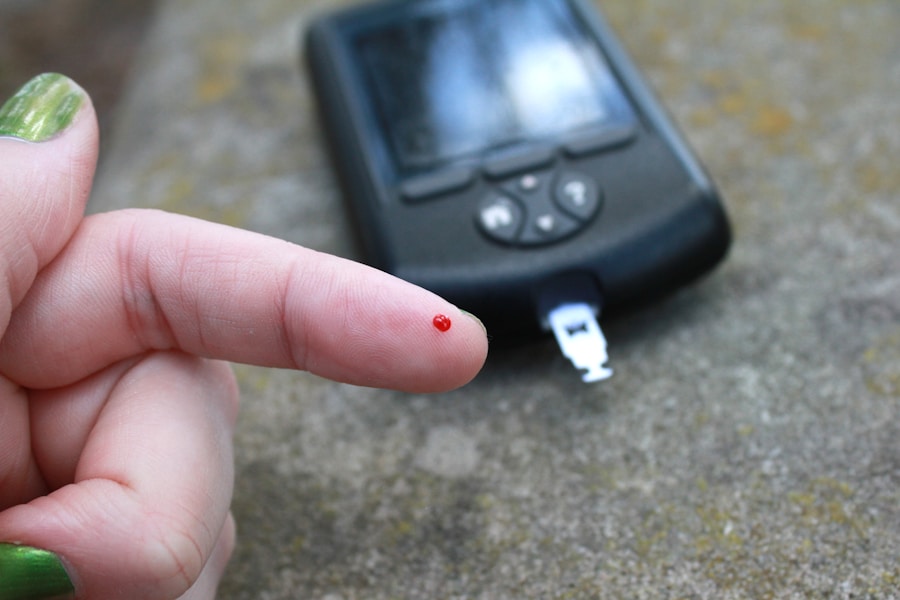Diabetes is a chronic medical condition that occurs when your body cannot effectively regulate blood sugar levels. This inability can stem from insufficient insulin production, the hormone responsible for facilitating the entry of glucose into your cells, or from your body’s cells becoming resistant to insulin. As a result, glucose accumulates in your bloodstream, leading to elevated blood sugar levels, which can have serious health implications if left unmanaged.
Understanding diabetes is crucial, as it affects millions of people worldwide and can significantly impact your quality of life. The condition can manifest in various forms, each with its own underlying mechanisms and implications. If you have diabetes, it is essential to recognize that it is not merely a single disease but rather a spectrum of disorders that require careful management and attention.
By gaining a deeper understanding of diabetes, you can better navigate the challenges it presents and take proactive steps toward maintaining your health.
Contents
Key Takeaways
- Diabetes is a chronic condition that affects how the body processes blood sugar, leading to high levels of glucose in the blood.
- There are three main types of diabetes: type 1, type 2, and gestational diabetes, each with different causes and risk factors.
- Causes and risk factors for diabetes include genetics, lifestyle choices, obesity, and certain medical conditions.
- Symptoms of diabetes can include increased thirst, frequent urination, fatigue, and blurred vision, and diagnosis is typically made through blood tests.
- Complications of diabetes can include heart disease, nerve damage, kidney damage, and vision problems, but can be managed with proper treatment and lifestyle changes.
Types of Diabetes
There are primarily three types of diabetes: Type 1, Type 2, and gestational diabetes. Type 1 diabetes is an autoimmune condition where your immune system mistakenly attacks the insulin-producing beta cells in your pancreas. This type typically develops in childhood or adolescence, although it can occur at any age.
If you have Type 1 diabetes, you will need to rely on insulin therapy for life, as your body cannot produce sufficient insulin on its own. Type 2 diabetes, on the other hand, is more common and often develops later in life. It is characterized by insulin resistance, where your body’s cells do not respond effectively to insulin.
This type is often associated with lifestyle factors such as obesity, physical inactivity, and poor diet. If you are diagnosed with Type 2 diabetes, you may be able to manage it through lifestyle changes, oral medications, or insulin therapy, depending on the severity of your condition. Gestational diabetes occurs during pregnancy and usually resolves after childbirth, but it can increase your risk of developing Type 2 diabetes later in life.
Causes and Risk Factors

The causes of diabetes vary depending on the type. In Type 1 diabetes, genetic factors and environmental triggers play a significant role in the onset of the disease. If you have a family history of autoimmune diseases, you may be at a higher risk for developing Type 1 diabetes.
Conversely, Type 2 diabetes is primarily influenced by lifestyle choices and genetic predisposition. Factors such as obesity, sedentary behavior, and poor dietary habits can significantly increase your risk of developing this type of diabetes. Other risk factors include age, ethnicity, and family history.
For instance, if you are over the age of 45 or belong to certain ethnic groups such as African American, Hispanic, or Native American, you may be at a higher risk for Type 2 diabetes. Additionally, conditions such as high blood pressure and high cholesterol can also contribute to your risk profile. Understanding these causes and risk factors can empower you to make informed decisions about your health and take preventive measures.
Symptoms and Diagnosis
| Symptom | Prevalence | Diagnosis |
|---|---|---|
| Fever | 80% | Physical examination and temperature measurement |
| Cough | 60% | Chest X-ray and sputum analysis |
| Shortness of breath | 40% | Pulmonary function tests and arterial blood gas analysis |
| Fatigue | 50% | Physical examination and blood tests |
Recognizing the symptoms of diabetes is crucial for early diagnosis and effective management. Common symptoms include increased thirst, frequent urination, extreme fatigue, blurred vision, and slow-healing wounds. If you notice these signs in yourself or someone close to you, it is essential to consult a healthcare professional for further evaluation.
Early detection can prevent complications and improve long-term outcomes. To diagnose diabetes, healthcare providers typically conduct blood tests to measure your blood sugar levels. The most common tests include the fasting plasma glucose test, the oral glucose tolerance test, and the A1C test, which provides an average blood sugar level over the past two to three months.
If your results indicate elevated blood sugar levels, your healthcare provider will discuss the next steps for managing your condition effectively.
Complications of Diabetes
If left unmanaged, diabetes can lead to a range of serious complications that affect various organs and systems in your body. One of the most common complications is cardiovascular disease, which increases your risk of heart attack and stroke. High blood sugar levels can damage blood vessels and nerves over time, leading to poor circulation and increased susceptibility to heart-related issues.
Other complications include neuropathy (nerve damage), nephropathy (kidney damage), and retinopathy (eye damage). Neuropathy can cause pain or loss of sensation in your extremities, while nephropathy can lead to kidney failure if not addressed promptly. Retinopathy can result in vision loss or blindness due to damage to the blood vessels in the retina.
Being aware of these potential complications underscores the importance of regular monitoring and proactive management of your diabetes.
Management and Treatment

Managing diabetes requires a comprehensive approach that includes monitoring blood sugar levels, adhering to medication regimens, and making lifestyle adjustments. If you have Type 1 diabetes, you will need to administer insulin through injections or an insulin pump regularly. For those with Type 2 diabetes, treatment may involve oral medications that help improve insulin sensitivity or stimulate insulin production.
In addition to medication management, regular monitoring of your blood sugar levels is essential for understanding how different foods and activities affect your glucose levels. Keeping a log of your readings can help you identify patterns and make necessary adjustments to your treatment plan. Collaborating with healthcare professionals such as endocrinologists, dietitians, and diabetes educators can provide valuable support in managing your condition effectively.
Lifestyle Changes for Diabetes
Making lifestyle changes is a cornerstone of effective diabetes management. Adopting a balanced diet rich in whole grains, lean proteins, healthy fats, fruits, and vegetables can help regulate blood sugar levels. It’s important to pay attention to portion sizes and carbohydrate intake since carbohydrates have the most significant impact on blood sugar levels.
Incorporating regular physical activity into your routine is equally important. Aim for at least 150 minutes of moderate-intensity exercise each week. Activities such as walking, swimming, cycling, or dancing can help improve insulin sensitivity and promote overall well-being.
Additionally, managing stress through mindfulness practices or relaxation techniques can positively impact your blood sugar control.
Support and Resources for Diabetes
Navigating life with diabetes can be challenging, but numerous resources are available to support you on this journey. Diabetes education programs offer valuable information about managing your condition effectively while connecting you with others facing similar challenges. Support groups provide a platform for sharing experiences and coping strategies with peers who understand what you’re going through.
Online resources such as websites dedicated to diabetes education and management can also be beneficial. Organizations like the American Diabetes Association offer comprehensive information on living with diabetes, including tips for meal planning, exercise recommendations, and updates on research advancements. By seeking out these resources and building a support network, you can empower yourself to take control of your health and live well with diabetes.
In conclusion, understanding diabetes is essential for effective management and prevention of complications. By recognizing the types of diabetes, their causes and risk factors, symptoms and diagnosis methods, potential complications, management strategies, lifestyle changes needed for better health outcomes, and available support resources, you can take proactive steps toward living a healthier life with diabetes. Remember that you are not alone in this journey; support is available to help you navigate the complexities of this condition successfully.
If you are interested in learning more about recognizing the signs and symptoms of sugar diabetes, you may want to check out this informative article on Understanding Diabetes: Managing Sugar Levels. This article provides valuable information on how to identify the early warning signs of diabetes and offers tips on managing sugar levels to prevent complications. It is a must-read for anyone looking to better understand this chronic disease and take control of their health.
Find Your Diabetes Herbal Protocol…
FAQs
What is diabetes?
Diabetes is a chronic disease that occurs when the pancreas does not produce enough insulin or when the body cannot effectively use the insulin it produces. Insulin is a hormone that regulates blood sugar.
What are the types of diabetes?
There are three main types of diabetes: type 1, type 2, and gestational diabetes. Type 1 diabetes is an autoimmune condition where the body’s immune system attacks and destroys insulin-producing cells. Type 2 diabetes occurs when the body becomes resistant to insulin or does not produce enough insulin. Gestational diabetes occurs during pregnancy and can increase the risk of type 2 diabetes later in life.
What are the symptoms of diabetes?
Common symptoms of diabetes include increased thirst, frequent urination, extreme hunger, unexplained weight loss, fatigue, irritability, blurred vision, and slow-healing sores.
How is diabetes diagnosed?
Diabetes is diagnosed through blood tests that measure blood sugar levels. The tests may include fasting blood sugar, oral glucose tolerance test, or A1C test.
How is diabetes treated?
Treatment for diabetes may include lifestyle changes such as diet and exercise, oral medications, insulin therapy, and monitoring blood sugar levels. The goal of treatment is to keep blood sugar levels within a target range to prevent complications.
What are the complications of diabetes?
Complications of diabetes can include heart disease, stroke, kidney disease, nerve damage, foot problems, skin conditions, dental disease, and eye problems. Proper management of diabetes can help prevent or delay these complications.
